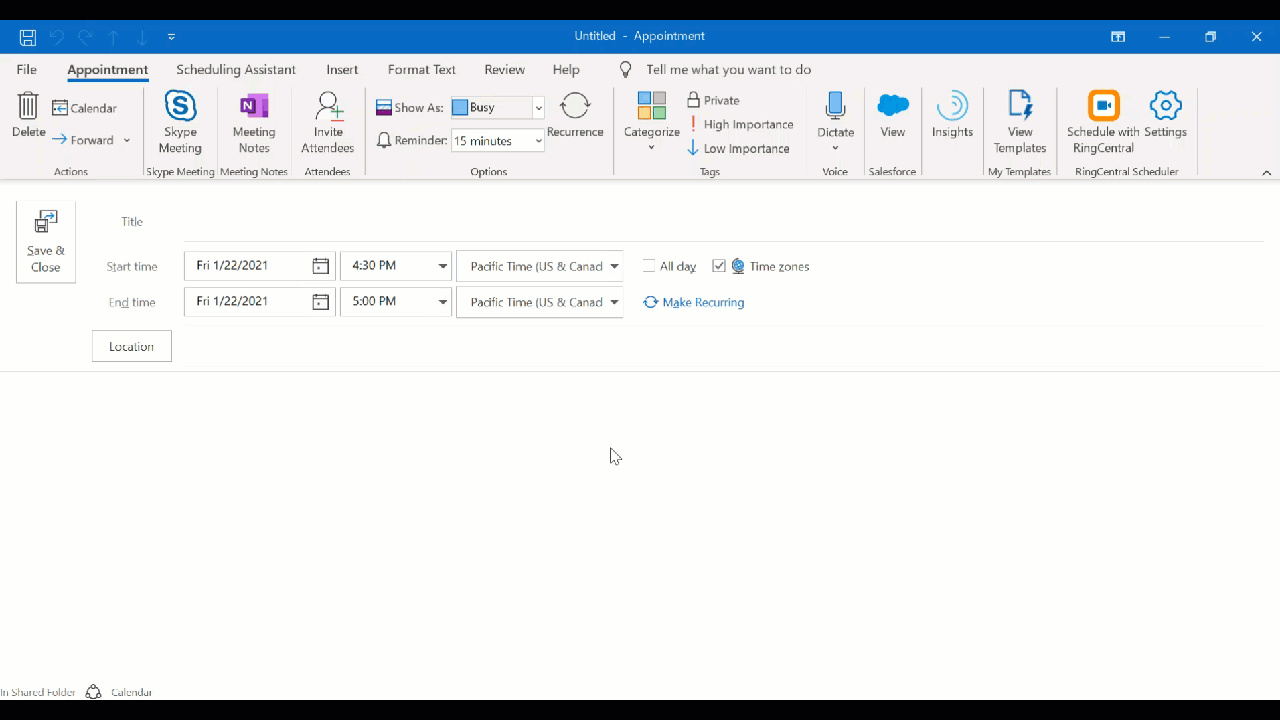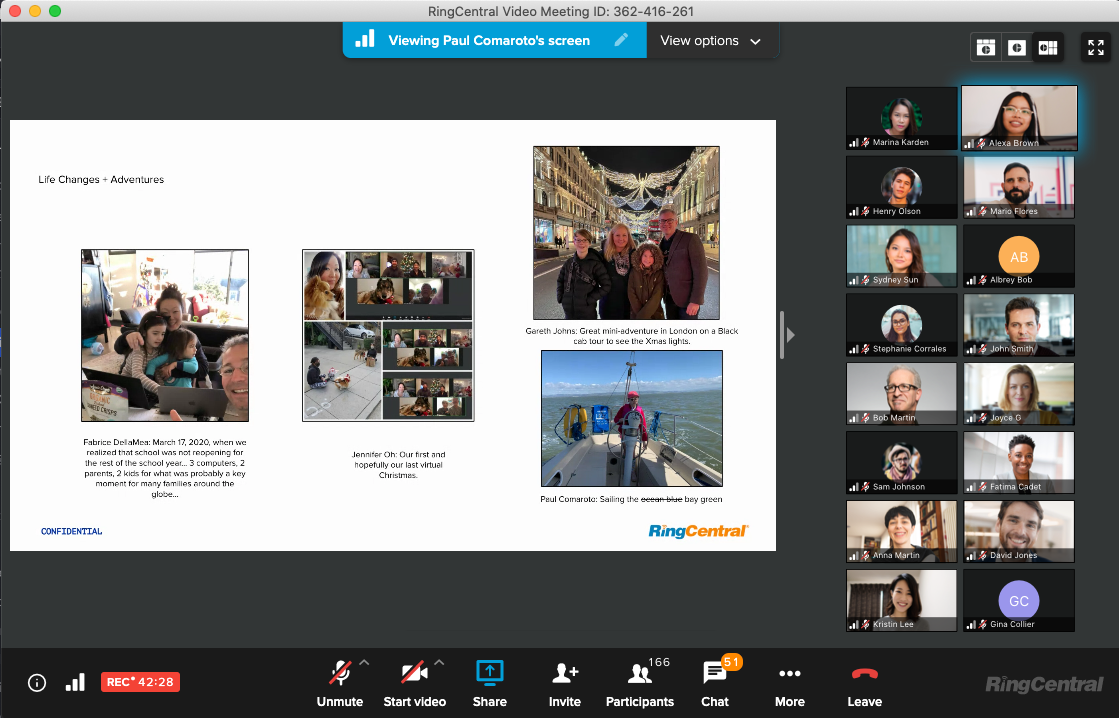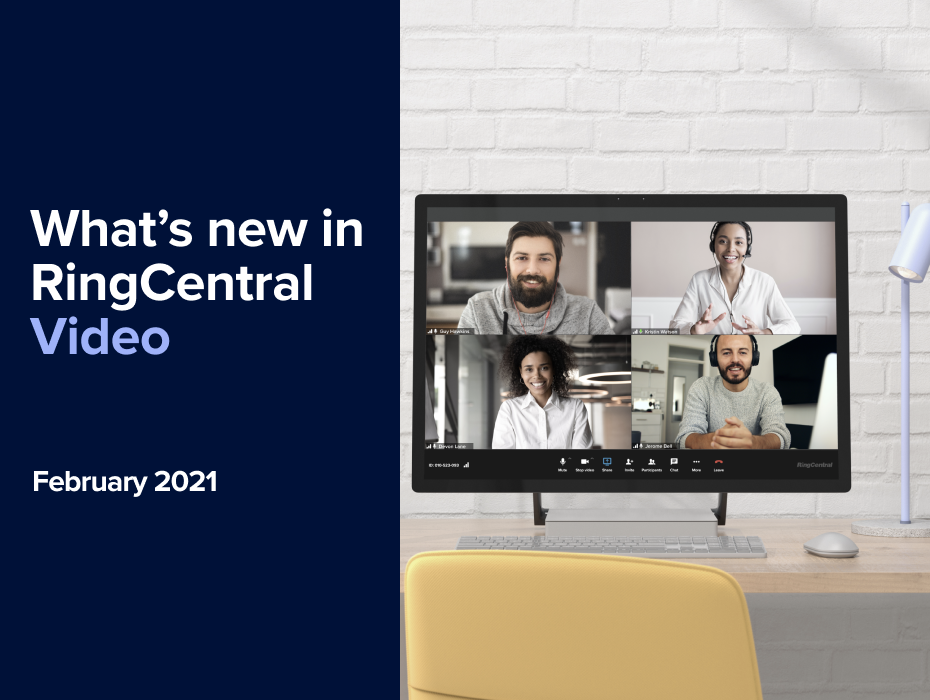We dedicate a lot of space in the RingCentral blog to describing the many ways our communications technology can form the backbone of an organization. These posts are especially handy for remote and distributed organizations—where our messaging, video, and phone solution stands in for the offices, hallways, and meeting rooms where interactions once took place.
From off-the-cuff chats to town hall meetings and team bonding, here at RingCentral, our own solution is at the center of how we do work.
In fact, there’s probably no better way to demonstrate the full capabilities of RingCentral than to talk about how we use it ourselves internally. As they say, it’s better to show than to tell.
Essentially, RingCentral is at the heart of how we work together, whether individually, as teams, or as a company:
- When we have a question, we send each other messages.
- When we need to discuss something in greater detail, we hit the call button.
- When the entire team needs to connect, we’ll use video.
- When our executives have an announcement, they host virtual town halls, broadcasted over RingCentral.
Basically, we do it all on a single platform called the RingCentral app, which comes with RingCentral Office®. We love how it helps us work together and breaks down barriers to communication, especially remotely. That’s becoming more important as businesses move towards a hybrid-remote future of work.
Here’s a glimpse into how we use RingCentral to improve our own workflows:
1. Teams: Messaging groups to organize conversations
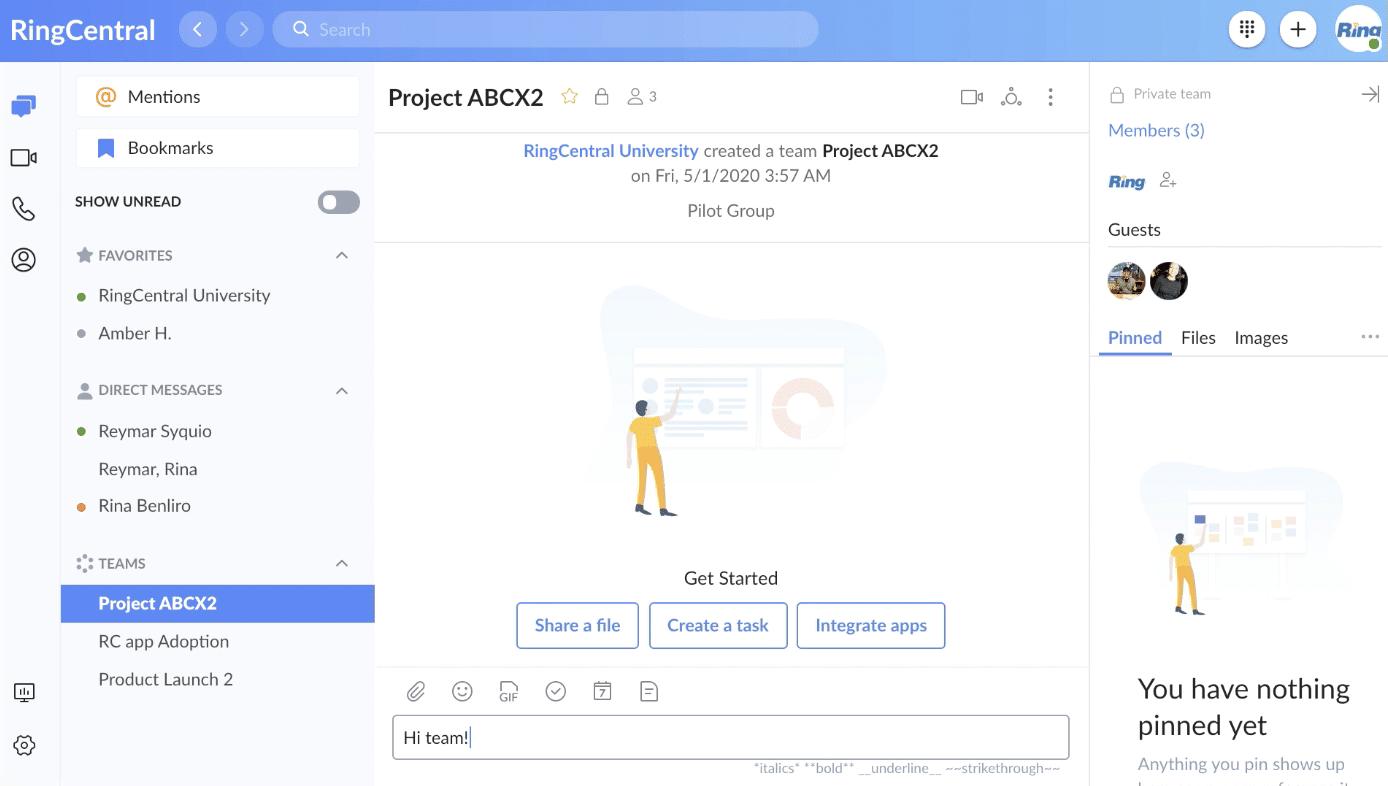
Working together is all about teamwork, but at RingCentral it’s also about Teams. In the RingCentral app, we create Teams for dedicated threads for projects, topics, and teams. Once you have a Team set up, you can share comments, post documents and spreadsheets, and share images and links all in one place.
Teams keep these conversations organized. Want someone’s attention within a thread? Simply @mention them. Want to share something important that colleagues will need to reference in the future? Pin it. We even launch group meetings directly from Teams with just a single click.
At RingCentral, we often set up Teams dedicated to specific ongoing projects or as a shared space for individuals in a certain department or function. But we use Teams for fun too. Recipe sharing, sports fans—Teams carves out a dedicated space for employee interests. One personal fave: RingCentral Pets, which is all about sharing pics of our favorite furry colleagues.
2. Outlook integration: Join meetings with a single click
As with most workplaces, working together often means meetings (and in this last year of WFH, lots of video meetings). We see face-to-face collaboration as an important way to get stuff done—and to build relationships, both internally and externally.
At most companies, the work of scheduling and managing meetings can feel like a job in itself. But not at RingCentral. That’s because our RingCentral for Microsoft Outlook integration makes a lot of that work automatic.
As Outlook users, booking meetings usually starts there. When we schedule a meeting, Outlook allows us to see our colleagues’ calendars and identifies the best time slots. And when we accept a meeting, it automatically populates within our Outlook calendar.
But the best part is how easily those bookings connect with RingCentral. When we open the app, it displays all our upcoming meetings for the day in the Video tab. And when the time comes to meet, there’s no need to go digging through our inbox for the details or to copy and paste over access details from our calendars—all we do is click “Join” and we’re in.
3. Video meetings: Short and productive is how we like ’em
We know that video meetings can sometimes be exhausting, but to us, that’s a sign your meeting mojo can use a tweak. At RingCentral, video meetings are a big part of our collaborative culture—and we spend a lot of time thinking about how to keep them engaging and productive.
Joining a video meeting is seamless, thanks to the one-click function in the app. But we think it’s what we do in meetings that makes ours so effective. For starters, while we’re big proponents of turning cameras on, we recognize that’s not always optimal—and we usually leave the decision up to the individual.
There are definitely benefits to seeing each other’s facial expressions and clarity from seeing who’s talking—but that’s not usually the only thing happening on our screens during a meeting anyway. Lately, we’ve been having fun with virtual backgrounds, both as conversation starters and to give WFH colleagues a bit more privacy.
We’re also avid users of the screen sharing feature, which helps us all get on the same page both literally and figuratively. The Annotate tool—which lets you highlight and draw directly on a screen share—keeps it all very interactive. Between the ease of joining and these added functionalities, we’re able to cut down on wasted time and get a lot more done every time we get together.
4. Yes, we still make OG phone calls
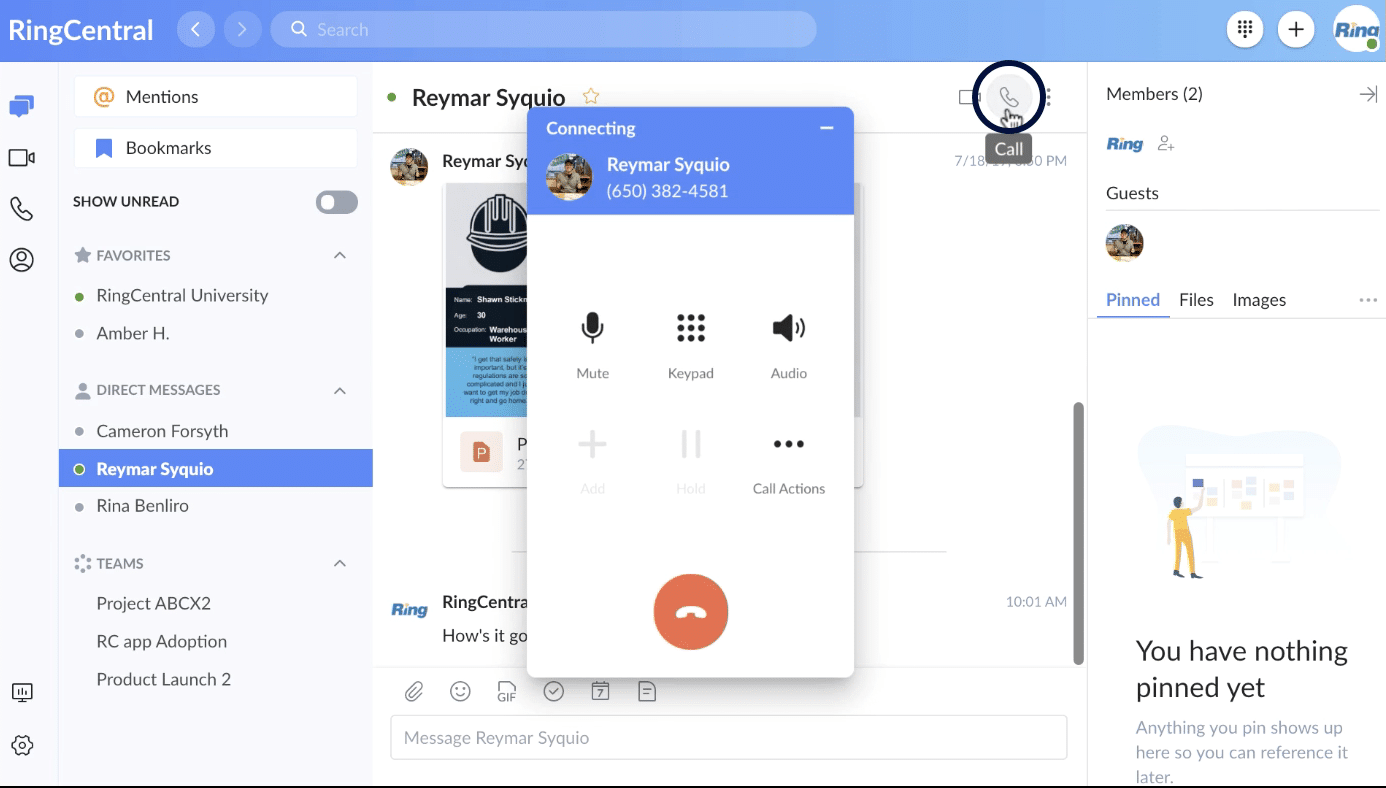
Phone calls might not be the primary mode of communication they once were, but they still serve their purpose. Even though we usually start with team messaging for internal communications, there are situations where nothing beats the phone for fast clarity. And telephone is an important channel for external communications too.
Most of our internal calls are pretty informal. When talking it out seems like the way to go, we’ll usually start with a simple DM: “Hey, can I call you about a question?” When the colleague is available, connecting by phone is as simple as hitting the Call button right from the messaging window—whether that coworker is located in the US, the EU, Asia, or just about anywhere else.
We use the phone for a lot of one-on-one meetings too, especially if we don’t anticipate having to share screens. The good news? If the conversation evolves and there’s a need to look at and share information, there’s no need to hang up and start again or book a video meeting another time. It’s just a single button to turn that phone call into a video call—instantly.
Looking ahead
Like many other organizations, we’re still figuring out exactly what post-pandemic work life will look like at RingCentral. Whether we go the path of companies like Ford Motors and Salesforce, both of which recently went hybrid, remain remote, or something else is still to be confirmed.
But I can say this: for me and my coworkers, WFH during COVID was a huge success, in large part because of the seamless communication our platform enables. And I’m excited about how the RingCentral platform will continue to support us as work continues to change and evolve.
Updated Mar 13, 2025










